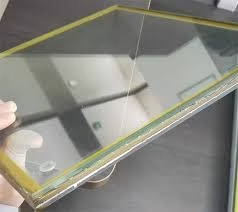Vacuum insulating glass uses a microscopically thin vacuum layer between its panes of glass to eliminate convection currents and lower thermal conductivity, creating superior insulation performance – closing any gaps between them and their surroundings.
Super slim profile to easily fit existing timber windows and doors while maintaining historic appearance of buildings; 50% lighter than triple glazing!
Aesthetics
Vacuum glass is thinner and lighter than traditional vacuum double glazing, and can easily fit into existing sliding sash windows without changing their aesthetic. As an energy-saving upgrade without altering original aesthetics, it makes vacuum glass ideal for historical building restoration projects requiring energy-efficient upgrades without changing window aesthetics.
Vacuum layers eliminate air molecules that could otherwise conduct heat between panes, while special low-emissivity coatings minimise radiation emitted by them – all together offering unrivaled insulation performance that rivals that of traditional walls.
Vacuum glass’s insulating properties help buildings reduce energy costs and carbon emissions while creating an inviting living environment. Recognized for being eco-friendly alternative to double glazing, vacuum glass has quickly become popular with homeowners, commercial building owners and architects.
Energy efficiency
vacuum insulating glass (VIG) creates an almost ideal vacuum between two panes of glass, virtually eliminating convective and conduction heat transfer between them to dramatically decrease window energy loss, particularly when combined with low-e coating for radiation heat loss reduction. This significantly cuts window energy loss significantly as well as potentially saving on window replacement costs.
HaanGlas VIG offers superior thermal efficiency to traditional air and argon-filled double glazing, helping homeowners save on energy bills while experiencing greater year-round comfort. Glavenir can also be specified with low shading coefficients to control solar heat gain for enhanced comfort levels.
A vacuum between the glasses prevents condensation, eliminating any risk of windows fogging up or being covered in dew in the morning. Furthermore, this allows more air space for thermal insulation purposes as well as improved impact resistance and wind pressure resistance. Lastly, VIG uses hard molten silicon seals instead of rubber gaskets which tend to break down over time in traditional double glazing, giving VIG an extended expected lifespan and higher resale value.
Condensation
Customers may be taken aback when they notice exterior condensation on their vacuum insulated glass (VIG) windows, yet this is simply due to VIG’s advanced thermal performance and high level of insulation. Exterior condensation occurs when warm air hits cold surfaces and releases moisture as a result of contact, leading to exterior condensation on windows made with VIG.
Condensation appears as a fine mist on the exterior of double glazed windows, rather than more noticeable droplets of water that appear with traditional double glazing windows. The mist indicates that insulation is working efficiently without leakage or damage to seals, signalling that their seals remain undamaged and functional.
Condensation is also an indicator that there are no air pockets between the glass panes that could reduce an IG unit’s insulation efficiency by allowing heat transference via conduction or convection – especially crucial when installed at higher altitudes.
Maintenance
Maintaining vacuum double glazing should extend its lifespan to 30 years with proper care, outliving standard air or argon-filled windows and potentially increasing the value of your home when selling it.Vacuum glazing stands apart from conventional insulating glass by producing similar results with gaps of less than 1mm between panes, making retrofitting into delicate frames without compromise to heritage buildings easier and preserving their aesthetics.
VIG is made from two sheets of toughened glass laminated together, making it much more resilient than regular insulated glazing. Furthermore, British Standards thermally toughened VIG meets all safety regulations and if broken shatters into small fragments that pose no threat to you or any surrounding property. HaanGlas VIG also makes for an easier retrofit into older properties as its gas fill can leak over time causing visible condensation issues to appear over time.






